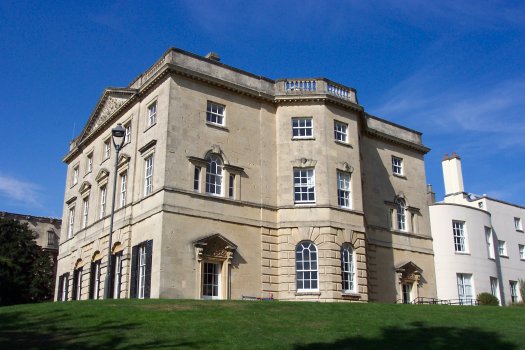
During
the Civil War the pass into Bristol between Windmill Hill and Brandon
Hill was defended by
forts built atop the two hills. These forts were used by Prince Rupert
during his siege of the city, and in
July 1643 the Prince successfully captured Bristol from the
Parliamentarians. Rupert became Governor
of Bristol and subsequently rebuilt the fort on Windmill Hill, which
then became known as the Royal
Fort. The Royalists held Bristol for the next two years but finally
surrendered to the Parliamentarian
forces
of Sir Thomas Fairfax in September 1645. In 1655 Oliver Cromwll ordered
the demolition of the
Royal Fort. Colonel Thomas Tyndall, a wealthy merchant,
leased
the land from Bristol Corporation in
1737 and Royal Fort House was built from 1758-61. James Bridges, the architect responsible for
rebuilding Bristol Bridge and St Nicholas in
the
18th century, is usually credited with the design of
the house, but a rhyme of 1767 suggests that Tyndall might have commissioned Bridges, Thomas Paty
and John Wallis to prepare separate designs for the three elevations of the house, with Bridges then
instructed to bring the three plans together. This idea is supported by the fact that the three elevations
are distinctly different. The house boasts what have been described as the best 18th centuries interiors
in Bristol, with fine plasterwork by Thomas Paty and Thomas Stocking. In 1799 Humphry Repton
created a
landscaped park around the building. The Tyndalls lived at Royal Fort House until 1916
when it was sold
to the University of Bristol. The house is now the home of the University's
Institute
for Advanced Studies. The
pass that the Royal Fort defended in the Civil War is now Park Street.